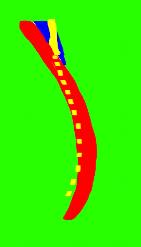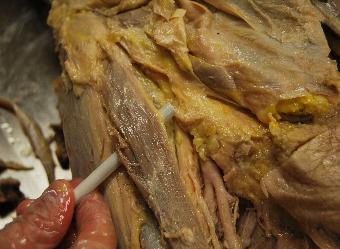Sartorius Muscle
SARTORIUS: FRIEND OR FOE?
Sounds like a silly title, but it does describe how I feel about that muscle sometimes when I am performing a continuous block for a Femoral, Fascia Iliaca or Saphenous nerve block. I described last week how the Sartorius Muscle can frustrate your attempts at a Fascia Iliaca block. Today, I will elaborate on the helpful relationship of this muscle to the Saphenous Nerve and how it may affect the performance of a Femoral Nerve block. [nonmember]…
REGISTER for FREE to become a SUBSCRIBER or LOGIN HERE to see the full article!
[/nonmember]
[wlm_ismember]
It is an important building block as you advance with your nerve block skills to develop a collection of ‘memorized’ 3-D anatomical relationships. This introduction to a very helpful 3-D anatomical relationship can serve as a helpful guidepost or reference, and it has applications to all three of the aforementioned nerve blocks of the anterior thigh.
The big picture in this relationship is the crossing of paths that occurs in the upper thigh of the Sartorius Muscle and the Femoral Nerve. The Sartorius crosses the thigh from its origin at the ASIS on the lateral aspect of the upper thigh down to its insertion on the medial aspect of the knee. The Femoral Nerve has a more ‘up and down’ track. It therefore begins medial to the Sartorius and follows underneath it for a considerable distance (along with the Femoral Artery & Vein) then begins to emerge on the lateral aspect of it as it approaches the knee as the purely sensory Saphenous Nerve. See images below. This is a helpful point as you attempt to find the Saphenous Nerve an appropriate level by tracing along the Femoral (then Descending Geniculate) Artery or by tracking medially over the Vastus Medialis toward the Sartorius Muscle.
The Saphenous Nerve can be seen high in the thigh adjacent to the Femoral Artery. It becomes more difficult to see as you go further caudally, especially once the Femoral Artery dives deep. At this point, the Saphenous Nerve follows the Descending Geniculate Artery. In fact, the Descending Geniculate Artery can become difficult to find.
When tracking medially past the Vastus Medialis toward the Sartorius Muscle, I will often pause to find the pulsing artery since the nerve will likely not be visualized prior to injection. I could track cranially up the Sartorius until the artery comes into view, then return caudally once I find it. The other thing I can do is remember the overall relationship of the Sartorius to the Femoral (& Saphenous) Nerve. If I am a hand breadth above the knee, I will focus my search under the lateral side of the Sartorius Muscle or even between it and the Vastus Medialis. This overall reference of the Sartorius Muscle and the Femoral Nerve helps me to more quickly identify my target if it is not immediately apparent.
When performing a Femoral Nerve block, the Sartorius may be encountered just lateral and superficial to your projected needle path. I do not prefer to transect this muscle as it injures tissue unnecessarily (as a principle) and can lead to hematoma formation (unlikely event) and unnecessary discomfort. I believe it could also lead to catheter migration when it contracts. By sliding cranially, you may remove it from your needle path. Alternatively, you can slide caudally which will bring it closer to the nerve. This will allow you to slide under it at a helpful perpendicular angle to the ultrasound probe. I will say, however, that practically, catheter migration is an unlikely event if you follow the steps that I describe in my training. Further, the technique of going under the sartorius is very difficult unless the patient is small and/or very thin. This is fortunate that this does not practically cause real concern as it is most often the path you will end up taking.
Keep this relationship in your mind as you perform this block, and watch for the subtle signs that you are remaining within ‘The Triangle.’
[/wlm_ismember]



